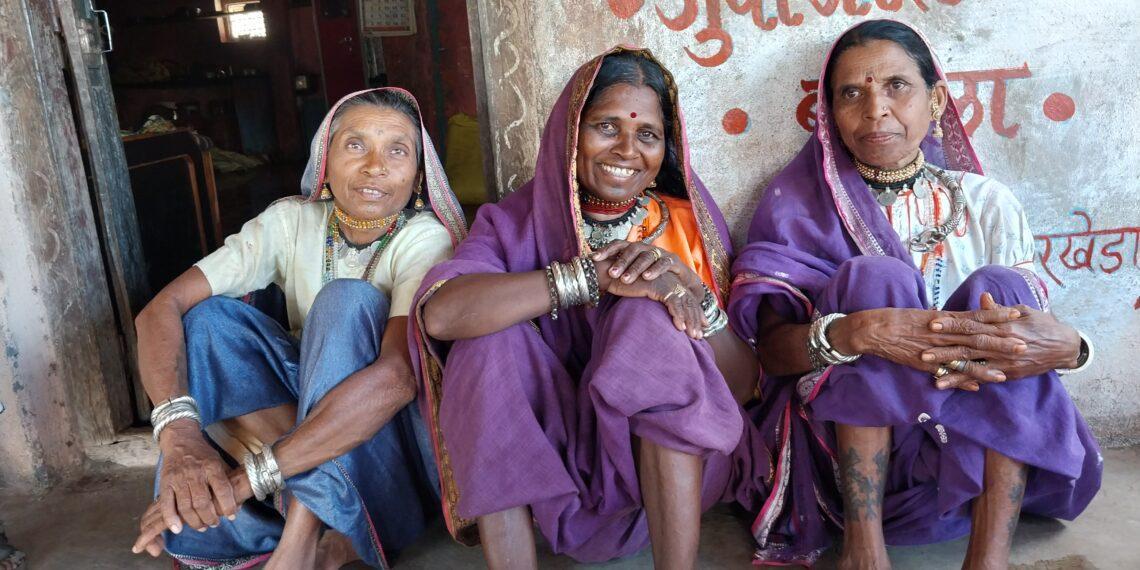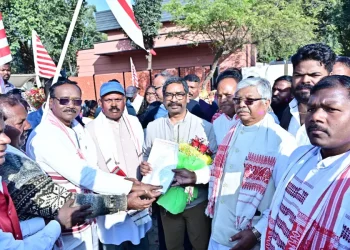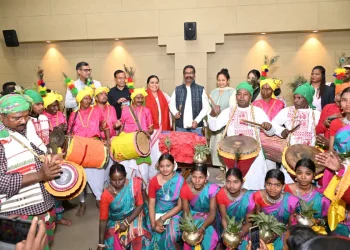Jalgaon
Leda Sitaram Pawara, a beat guard of the State Forest Department, presents himself as someone who has witnessed how generational changes have affected the way the women folk from his Pawara tribe dress up.
His mother wears the Nati regularly. But his wife prefers the saree.
“These days, even tribal women prefer wearing sarees. As they are educated, many are drawn towards modern clothes. Young girls have started wearing jeans too. Modern education has influenced the choice of tribals’ attire,” Leda Sitaram tells The Indian Tribal.
Nati comprises a single piece of cloth worn like a dhoti from the waist, with the upper portion acting as a ghunghat to cover the head. A blouse in a contrasting colour complements the dress and colorful neckpieces complete the look along with silver bangles and anklets.
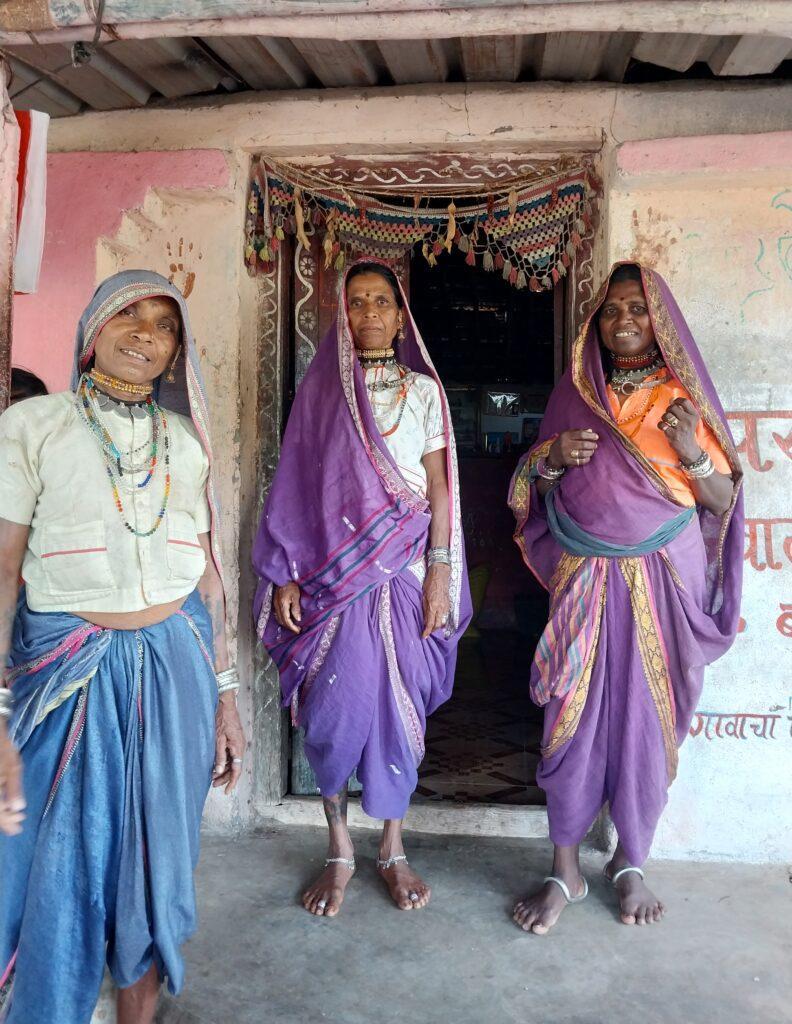
The beautiful dress called Nati is worn by the women of the Pawara tribe, a sub-group of the Bhils. The Pawaras reside in and around the Satpura range of central India.
Leda Sitaram admitted his wife has never even tried wearing Nati. “I personally do not like the idea that tribals are leaving behind their own culture. But if an officer comes to my house, may be a woman, in a Nati, then it won’t leave an impression as good as the saree which is more common,” he shared.
The Nati is bought from shops in Pal, a big village near the Suki river of Jalgaon. The village has power connection and a large tribal population of which many are Pawaras.
Jalgaon district is known for the Yawal Wildlife Sanctuary. There are tribes like the Bhil, Pawara and the Bhilala here. In Garkheda village in the district, women, mainly the older ones, were seen in Nati. In contrast, the younger women were in sarees.
Gandhian Mohan Hirabai Hiralal, a social activist based in Gadchiroli district of Maharashtra, studies tribal life and culture. He pointed out that a change in the dress habits has affected many tribes across India and not only the Pawara tribe.
“Unlike earlier, tribals today aren’t that much cut off from the mainstream. The new generation wears clothes to move on with the times. People do want to wear modern clothes. Even non-Adivasis are seen wearing western clothes. Though changing with the times is necessary, old traditional things must not be forgotten. Museum is one way to preserve old customs,” Hiralal added.
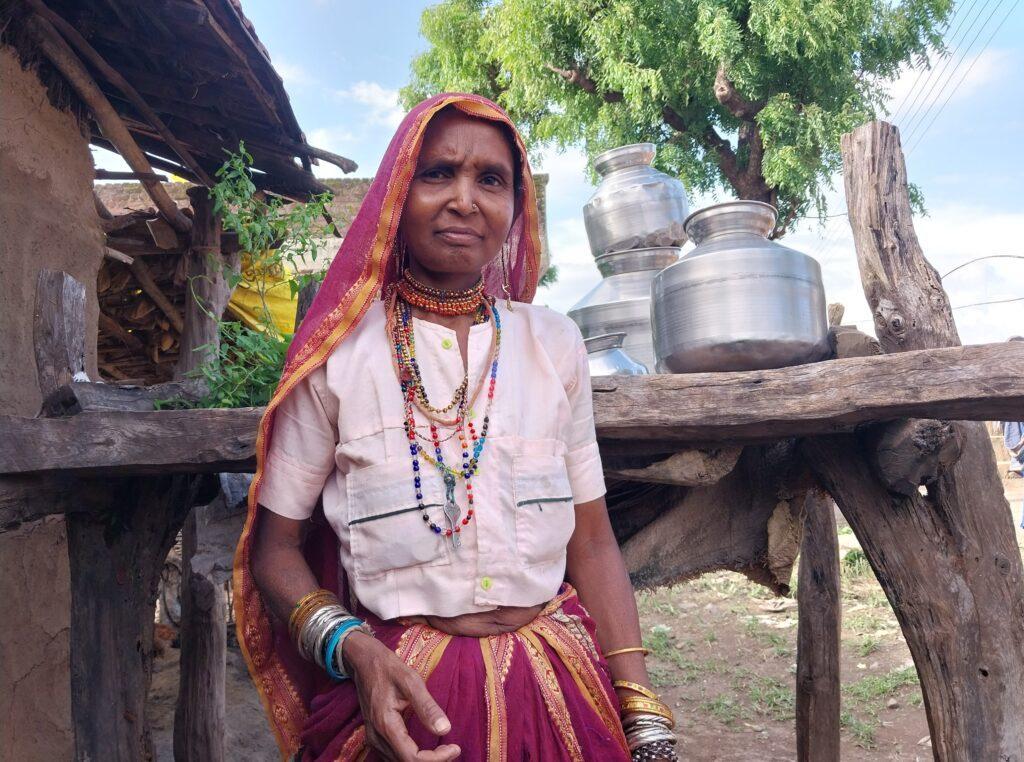
While Nati elicits differing viewpoints, a notably interesting and common thing in a few villages dominated by the Pawara tribe, is a water stand point made of wood called Mohli and surrounded by potted plants.
Water is collected from inside homes and kept outside in the Mohli in matkas or water pots. The plants ensure that the water remains cool. This also adds to the beauty.
“The Mohli ensures that the water stays cool naturally. Even outsiders can come and drink anytime without disturbing any family members if they feel thirsty,” Leda Sitaram said, informing about this Pawara lifestyle.
Wood work was also seen inside the room of a tribal’s house. “The wood used in this is from the Anjan tree which is common here,” said Bina, the woman of the house.











